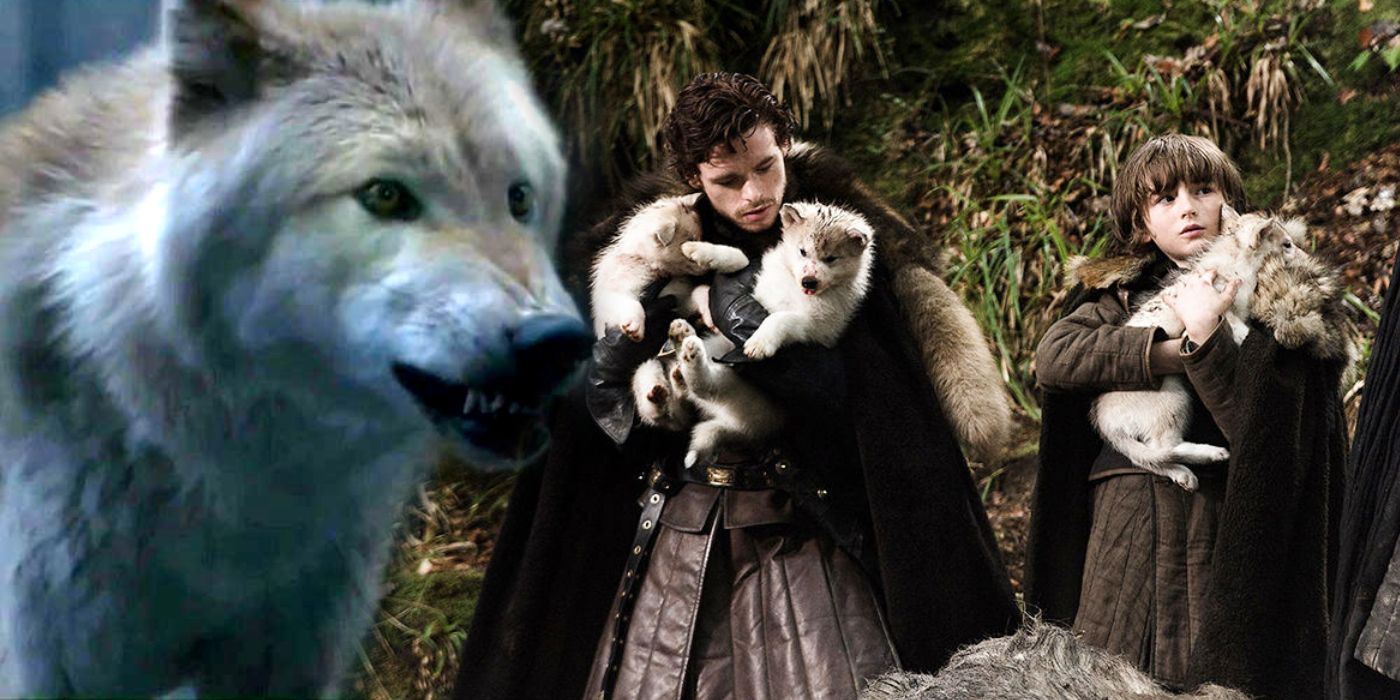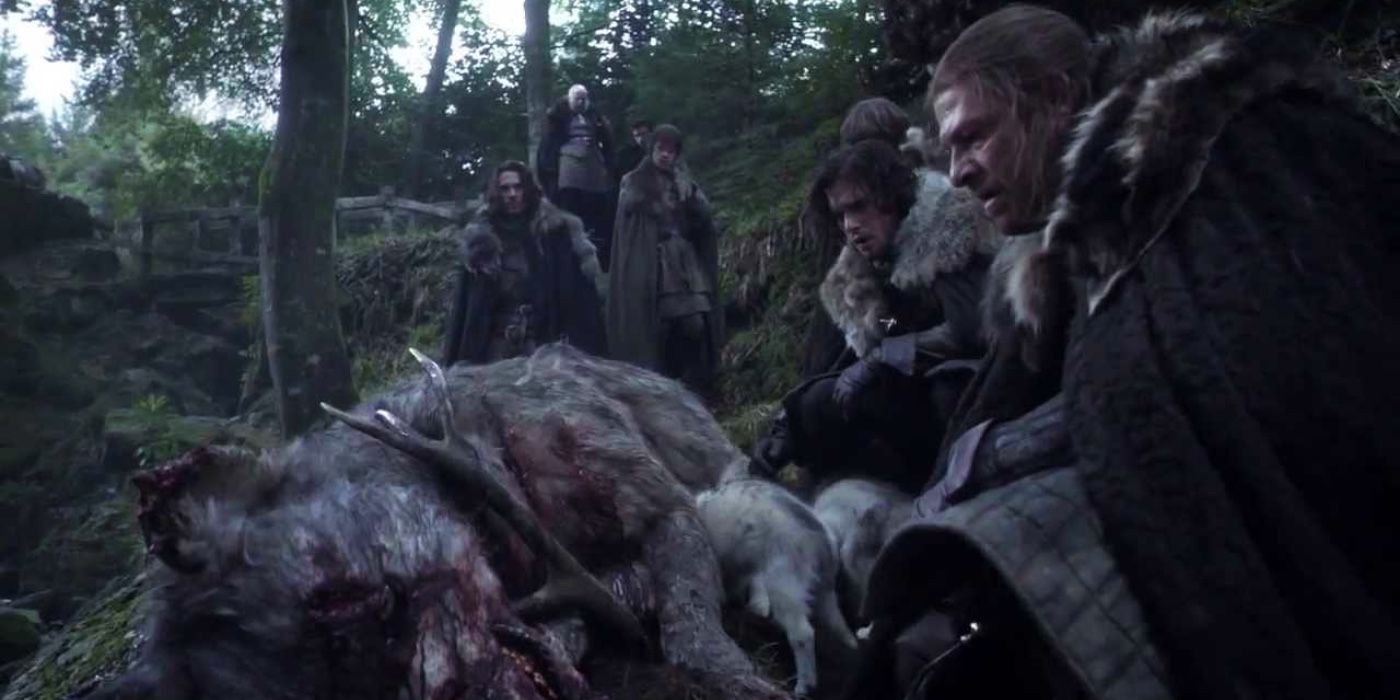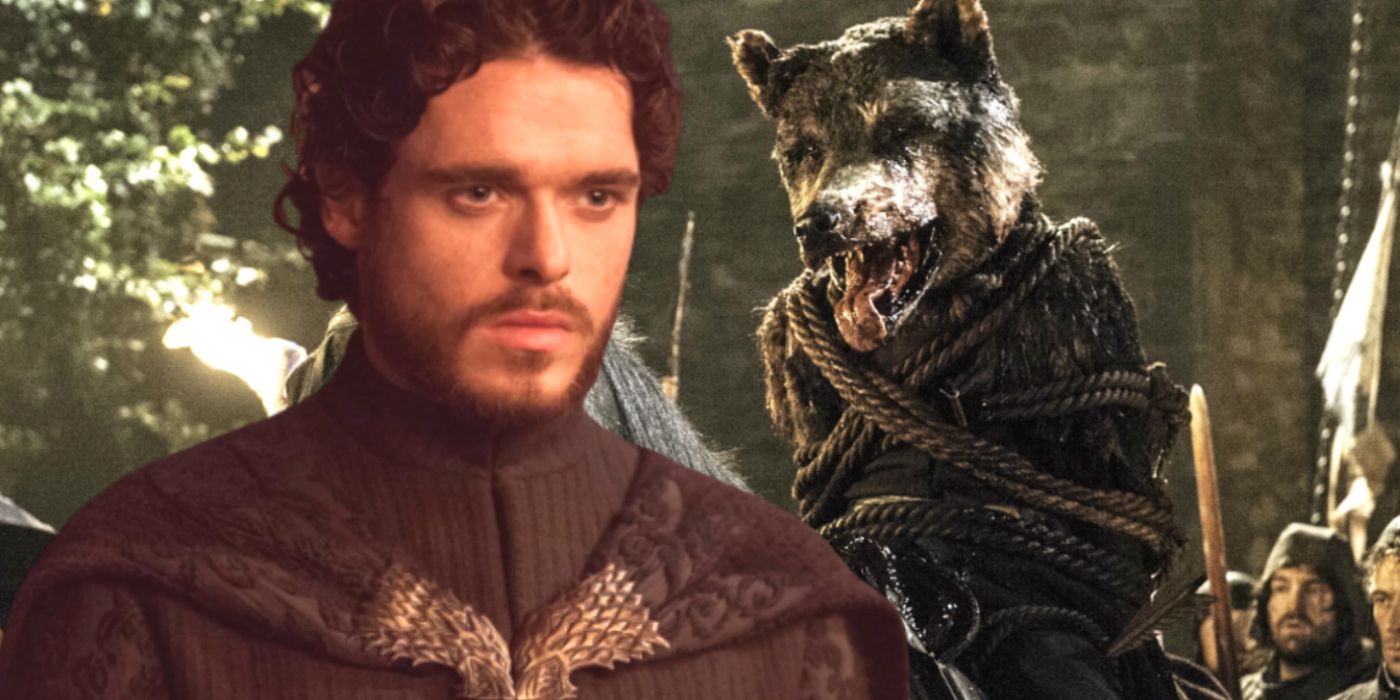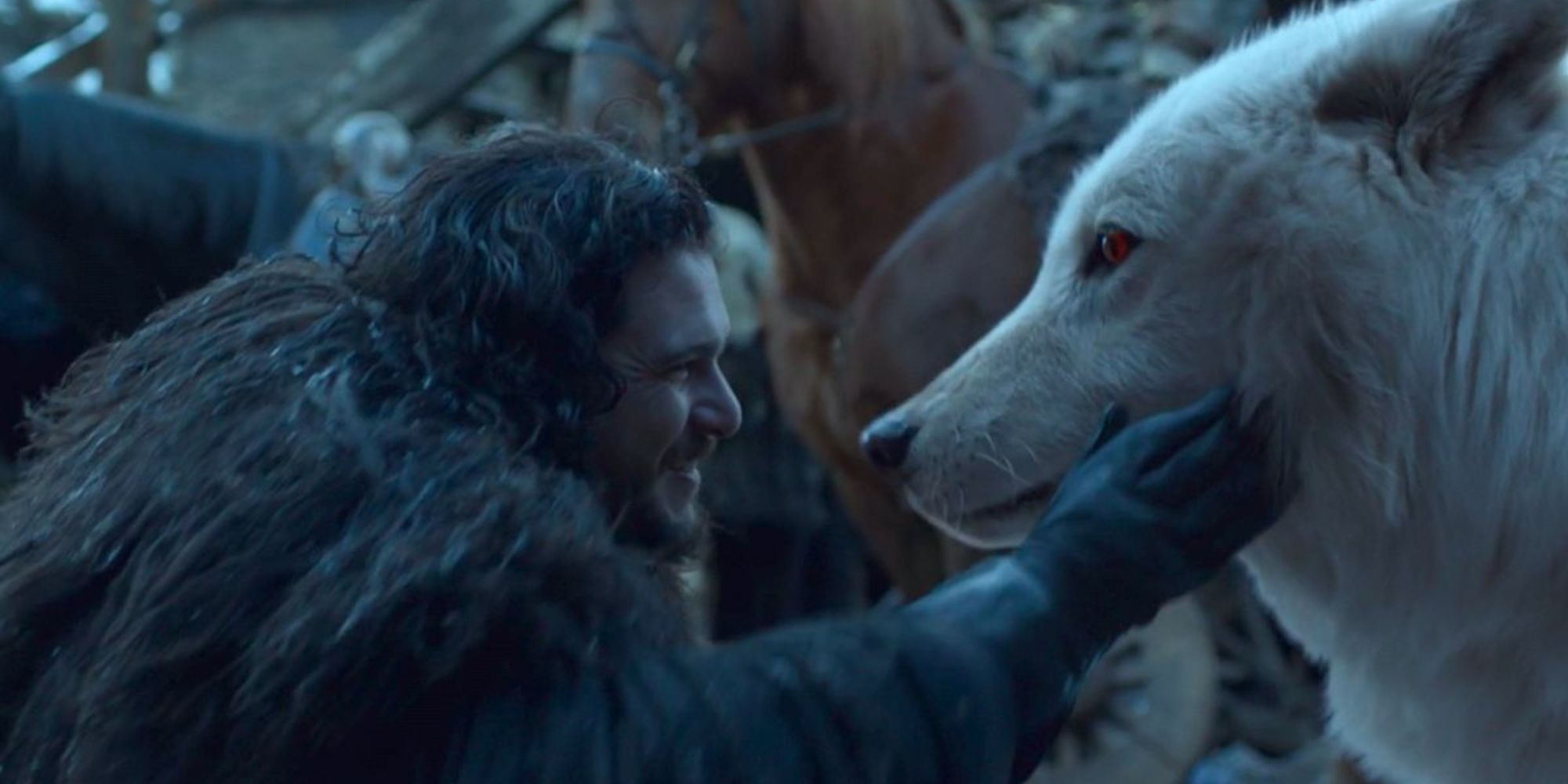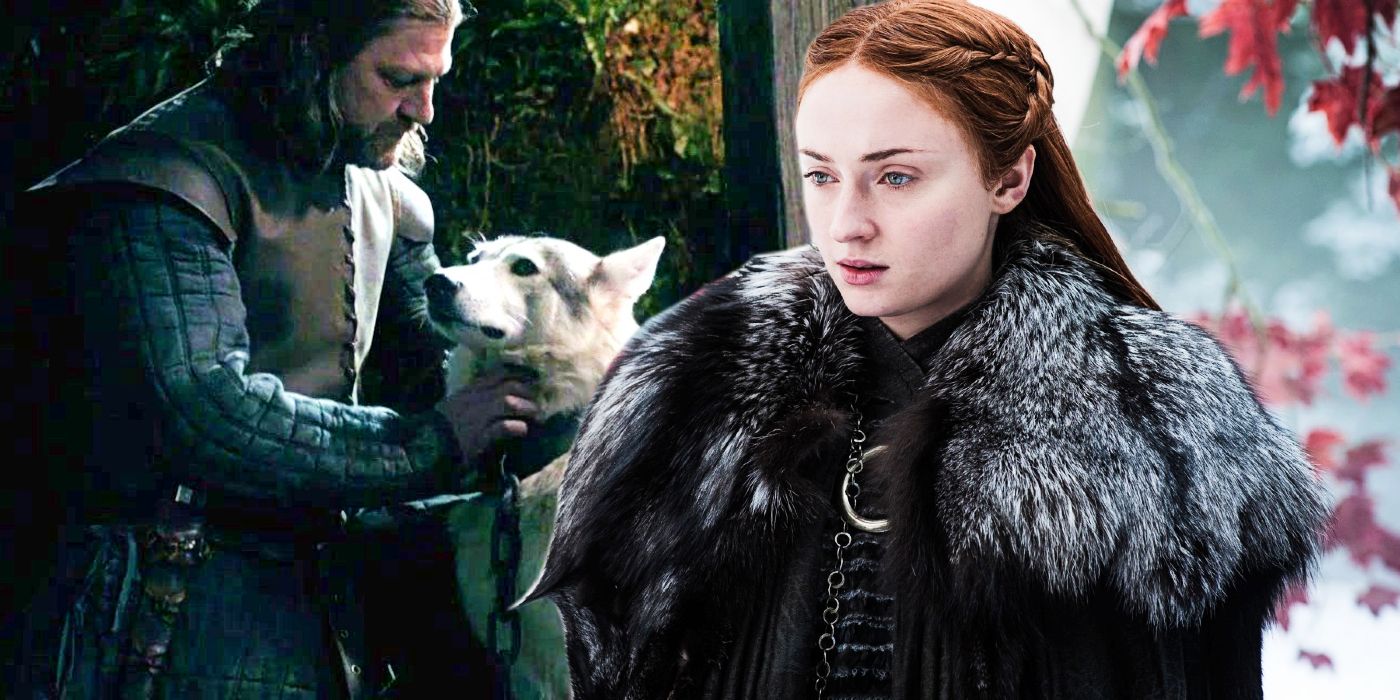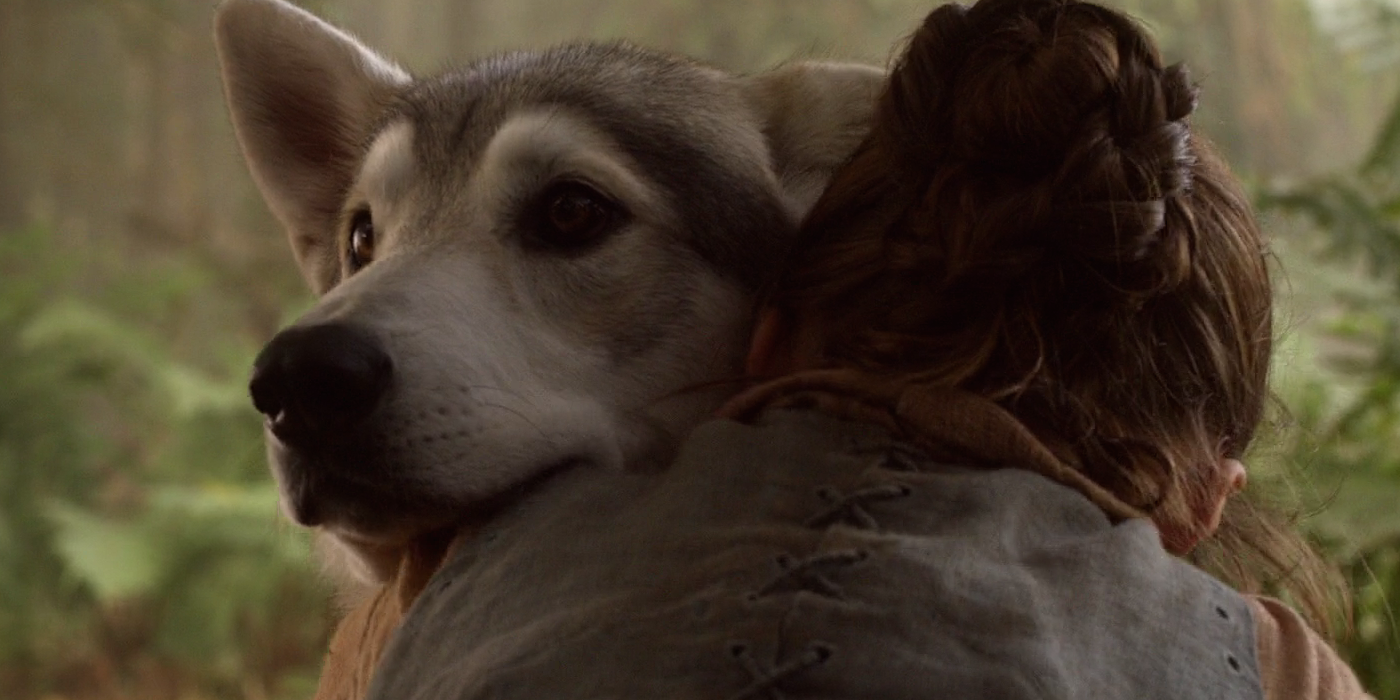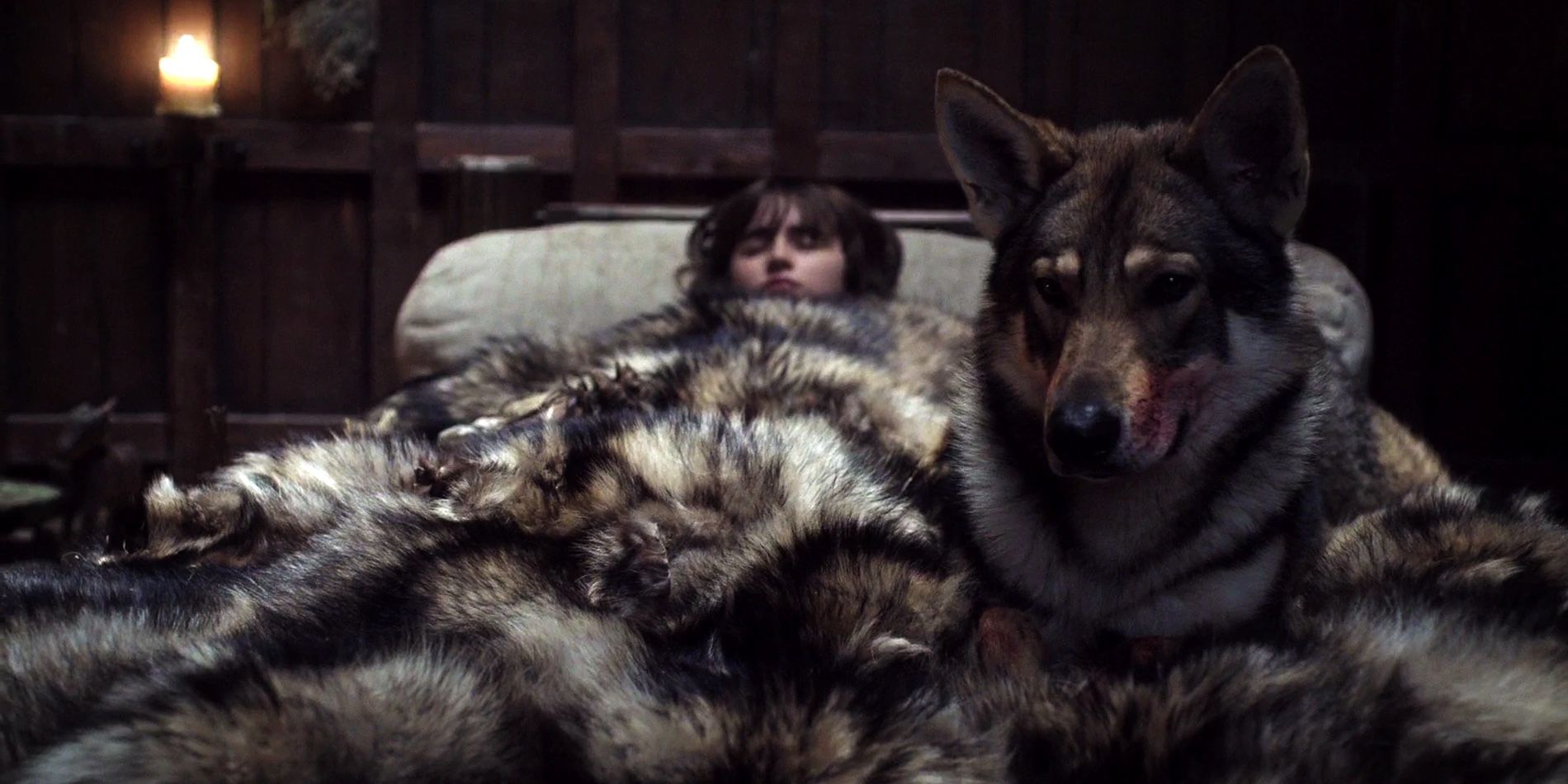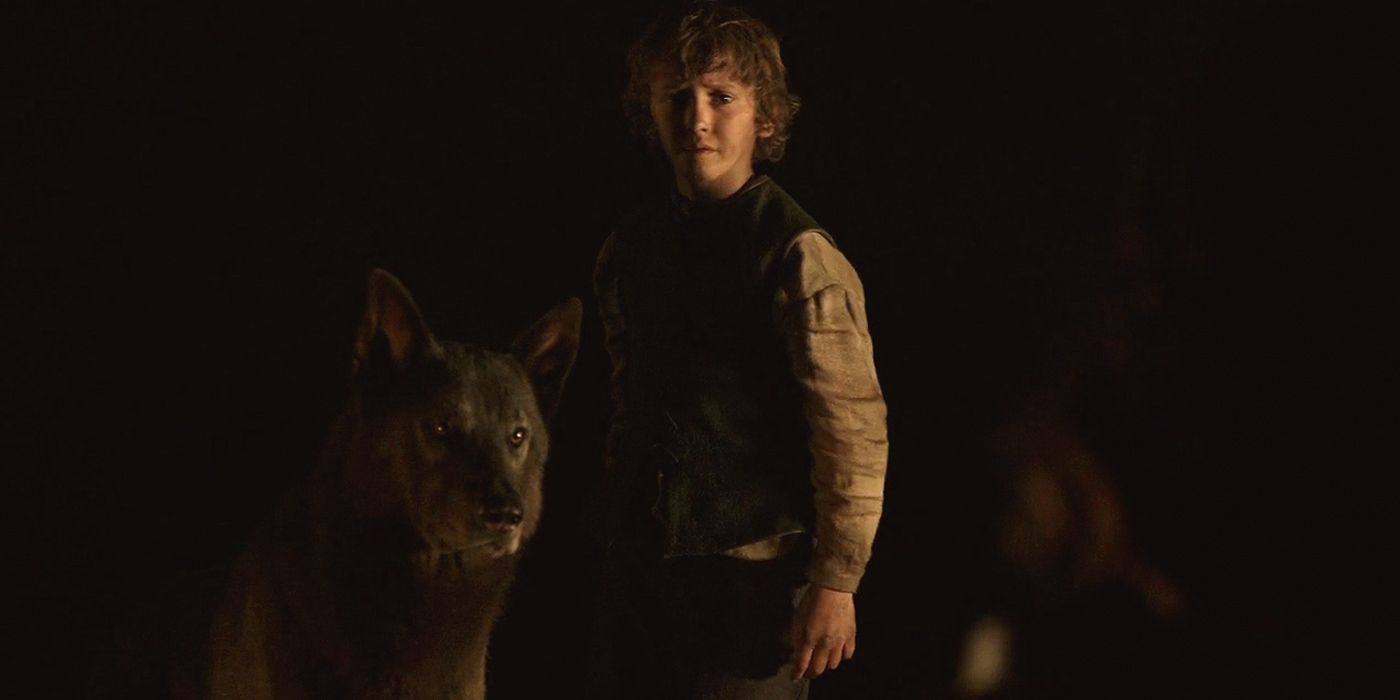While not all of the Starks nor their direwolves survived through the end of Game of Thrones, the wolves’ names foreshadowed the fate of their respective Stark children. Aside from providing hints to the storylines of each Stark, the direwolves were an integral aspect of House Stark’s identity. Featured on their family’s sigil, the direwolves were known for having a special connection to historical members of House Stark as they led the North. After being practically extinct south of the Wall for 200 years, the direwolves’ return to Winterfell in Game of Thrones’ first episode was a product of a change in Westeros that would impact the entire series, the return of the White Walkers.
After executing a deserter from the Night’s Watch, Ned Stark and his sons happened upon a dead direwolf mother who had left six pups behind; one for each Stark child, including Ned’s so-called bastard Jon Snow. The grey pup aptly named Grey Wind went to eldest son Robb, Lady went to Sansa, Nymeria to Arya, Summer with Bran, black-furred Shaggydog to youngest child Rickon, and the white runt Ghost went with Jon. Once the Starks become separated in Game of Thrones season 1, their direwolves serve as close connections to their family, heritage, and home.
The popularity of the Starks' direwolves on Game of Thrones was unprecedented, with fans continually lobbying for more inclusion of the childrens’ furry companions. Many of the direwolves went their own ways throughout the series, whether it was an early death or separation from their person, with Ghost being the most prominently featured wolf at Jon’s side at the Wall. Not only were the direwolves important to the Northern, tight-knit identities of the Stark children, but their names also had a role in foreshadowing their humans’ eventual fates.
Ned’s Death Left His Children Scattered
Both the unnamed mother to the direwolf litter and father to the Stark children had early, tragic deaths in Game of Thrones. In the first episode, the direwolf mother died after being attacked by a stag, leaving all six of her pups scattered and without a cohesive leader to be raised by. In episode 9 of Game of Thrones season 1, Ned is killed at the command of King Joffrey Baratheon, causing his six children to become separated around Westeros and lose their beloved parent. The symbolism between the two deaths wasn’t lost, with the direwolf’s neck impaled by a stag’s antlers and Ned having his neck severed by a Baratheon stag. The circumstances of their deaths were also similar, with both meeting their untimely demise after traveling south following a prolonged absence in the North.
Robb Stark’s Quick Reign Was Like A Grey Wind
Just as quickly as young Robb rose to power as his father’s heir and the King in the North, he was killed by his enemies. Donning grey armor with a grey Stark sigil, Robb’s short-lived yet remarkable feats on the battlefield can be symbolically looked upon as a grey wind. As a fast and powerful wolf at Robb’s side in battle, Grey Wind also lived up to his name. Unfortunately, Grey Wind and Robb both met their demise on the same day when betrayed and killed by the Freys at Game of Thrones season 3's Red Wedding. In a brutal mockery of House Stark, the Freys cut off Grey Wind’s head and mounted it atop Robb’s corpse.
Jon Died & Was Resurrected, Becoming A Ghost Of His Former Self
When Jon Snow joined the Night’s Watch, Ghost became his only real connection outside of his siblings and father, even more so since he was never ostracized as a bastard with his direwolf. While Jon calling his direwolf Ghost may have just been because he had an all-white coat, the name takes on much further symbolism in Jon’s Game of Thrones story. After being betrayed by men of the Night’s Watch as their Lord Commander, Jon was murdered in cold blood when several men stab him in the chest. For the next episode, Jon Snow was declared dead, though Ghost protected his body. Davos recruited Lady Melisandre to resurrect Jon Snow from the dead, which she successfully did at the beginning of Game of Thrones season 6. After this time, Jon dealt with being a ghost himself alive on Earth, not truly being the once fully alive version of himself.
Similar to Robb disappearing from prominence like a grey wind, Jon’s ultimate Game of Thrones ending where he left Westeros to live beyond the Wall saw him abruptly disappear from leadership like a ghost. He became the central figure for Game of Thrones that united ice and fire as the son of a Stark and Targaryen, though once the fighting was over, he left, leaving only the ghost of his greatness and legacy in the Seven Kingdoms.
Sansa Became Not Just A Lady, But A Queen
In Game of Thrones, Sansa Stark’s direwolf was the first to die, having been killed as a result of Arya’s direwolf biting Joffrey. Being without Lady in the capital was hard for Sansa to adjust with her profound loneliness, not having her direwolf at her side, as well as losing a part of her connection to home. She eventually got back on track and became extremely dedicated to preserving the memory of Winterfell and connecting to her family, all of which she had to do without the comfort of her direwolf.
In the most direct correlation between the direwolf’s name and the Stark child’s fate, Sansa ended up becoming a well-respected Lady in Westeros. Being of noble birth, Sansa had always held the title of a lady, though she became the Lady of Winterfell following the deaths of Catelyn, Ned, and Robb and the disappearances of Bran and Rickon. Once Sansa was finally able to regain Winterfell from Ramsay with the help of Jon, she fully took on the responsibilities and role of a noble Lady in Westeros while tasked with an even bigger duty as the Wardeness of the North. Sansa’s confidence and capability in leadership didn’t stop at Ladyship; the Northmen elected her the Queen in the North in Game of Thrones’ season 8 finale, where she lobbied for the North to become its own sovereign kingdom.
Arya Became A Strong Adventurer Like Princess Nymeria
Nymeria and Arya’s time together was cut shorter than Sansa’s with Lady, as Arya let her direwolf free into the wild to avoid being killed for biting Joffrey. Arya longed for Nymeria and her connection to Winterfell and home as Sansa did for Lady, but because her direwolf lived, Arya and Nymeria reunited in GOT season 7. Nymeria had become the leader of a pack of wolves, living in the wild farther south than any other direwolves dared go.
Detailed further in the A Song of Ice and Fire novels, Arya intentionally named her direwolf Nymeria due to her idolizing Westeros’ historical Princess Nymeria. In Game of Thrones lore, Nymeria was a princess of the Rhoynar who, as a natural-born leader and adventurer, led the Rhoynar to Dorne, which she would rule over for two decades. She was known as the “warrior queen,” commanding and leading her armies on the battlefield, which made her the strong-willed female warrior that Arya wanted to become. The namesake of Arya’s direwolf was also known as an accomplished voyager, having legendarily commanded ten thousand ships that wandered the southern seas. Nymeria discovered several islands and towns on her adventures, which is the type of adventure that Arya takes up in the Game of Thrones series finale when she sets sail to find “what’s west of Westeros.”
Bran Brought Summer Back To Westeros
If one of the Stark children had a deep connection to their direwolf, it was Bran with Summer. Through Summer, Bran discovered he was a warg, being able to inhabit Summer’s mind and control her movements in a dream-like state. Aside from Ghost, Summer was one of the longest-lasting direwolves that hardly left his human’s side in the series. Summer also helped Bran find Game of Thrones’ Three-Eyed Raven beyond the Wall, showing him to the weirwood tree. Once Bran had fully become the Three-Eyed Raven, Summer died while protecting him from a horde of wights in season 6.
Although Summer died in the harsh winter beyond the Wall, his name was important in foreshadowing Bran’s integral role in saving Westeros. Through Bran’s connection to the Night King, he saw what was to come of the Seven Kingdoms and how to stop the wights from going beyond Winterfell, knowing their leader wants Bran himself. Bran had given Arya the Valyrian steel blade knowing she would plunge it into the Night King and destroy all of White Walkers. In strategically manipulating the Battle of Winterfell to distract the Night King and allow Arya to kill him, Bran’s plan ended the Long Night of winter and finally brought a green summer back to Westeros.
Rickon’s Short Life Was Shaggy And Rough
Widely regarded as the forgotten Stark, neither Rickon nor his direwolf Shaggydog served a prominent role in Game of Thrones’ conflict. Rickon's direwolf was the most aggressive of the litter, living up to his name as a wild being. After being separated from Bran before his brother went beyond the Wall, Rickon left with Osha, where they would head for the Last Hearth accompanied by Shaggydog. For the next 3 seasons, Rickon and Shaggydog’s whereabouts were unknown. However, his appearance as Ramsay Bolton’s prisoner in Game of Thrones’ Battle of the Bastards suggested he and Osha had been surviving in the wild and scavenging. Ramsay revealed he cut off Shaggydog’s head, presenting it to Jon Snow as proof that he holds Rickon captive. Rickon’s final appearance in Game of Thrones is shaggy himself, being unkempt with wild hair and clothes as well as a wildling's survival tactics. He also had to live like one of Ramsay’s dogs under his watch, being held captive and sent to run on a field before Ramsay shot an arrow in his back.

